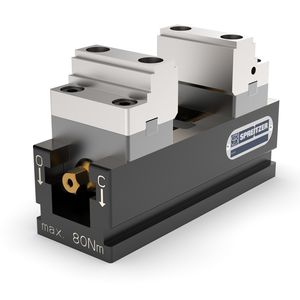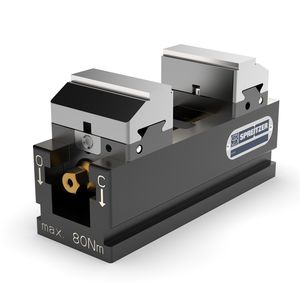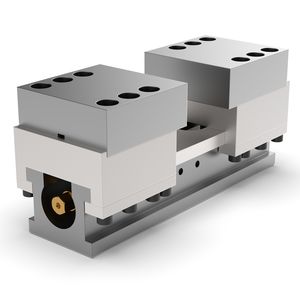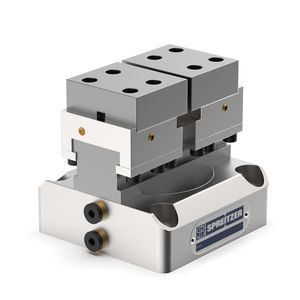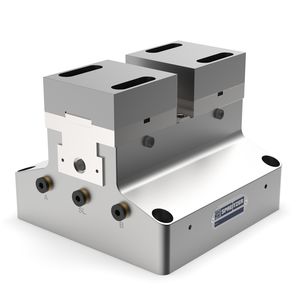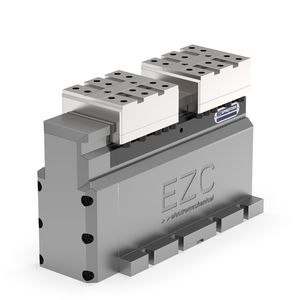
- Machine-tools
- Machine Tool Accessory
- Machine tool vise
- Spreitzer GmbH & Co. KG - Präzisionswerkzeuge
- Company
- Products
- Catalogs
- News & Trends
- Exhibitions
Center-clamping vise MZC for machine tools5-axis machine toolhorizontal






Add to favorites
Compare this product
Characteristics
- Applications
- for machine tools, 5-axis machine tool
- Configuration
- horizontal, vertical
- Other characteristics
- self-centering, steel, compact, center-clamping, machining, flexible
- Max. clamping force
40 kN, 50 kN, 70 kN
- Stroke
30 mm, 40 mm, 50 mm
(1 in, 2 in, 2 in)
Description
The self-centering clamping vise series MZC is characterized by a completely encapsulated, massive and torsion-free construction. The cleaning effort resp. malfunction because of dirt and stuck chips will be minimized.
The large clamping width and the high clamping force enable the universal and flexible use on multi-axis machining centres.
Due to the optimized and compact design as well as the wide range of clamping jaw types an optimal accessibility to the workpiece for different customer needs respectively an optimal accessibility on different machine concepts can be reached.
The fixturing holes in the base of the centre-clamping vise make mounting a vise on any pallet and automation system easy.
On customer request a fully integrated version into exchange paletts such as System 3R, EROWA, HIRSCHMANN or ZeroClamp pallets is available.
The centre-clamping vise series MZC can be used when maximum centre and repetition precision are not necessary as well as for already pre-machined workpieces.
Explanation type: model length (mm)-width (mm).
Type: MZC 220-80 E, MZC 220-80 S, MZC 280-100 E, MZC 280-100 S, MZC 360-125 E,
MZC 360-125 S.
Please specify the type when raising a request.
VIDEO
Catalogs
Other Spreitzer GmbH & Co. KG - Präzisionswerkzeuge products
Self-centering machine vises for precision workholding
Related Searches
*Prices are pre-tax. They exclude delivery charges and customs duties and do not include additional charges for installation or activation options. Prices are indicative only and may vary by country, with changes to the cost of raw materials and exchange rates.







